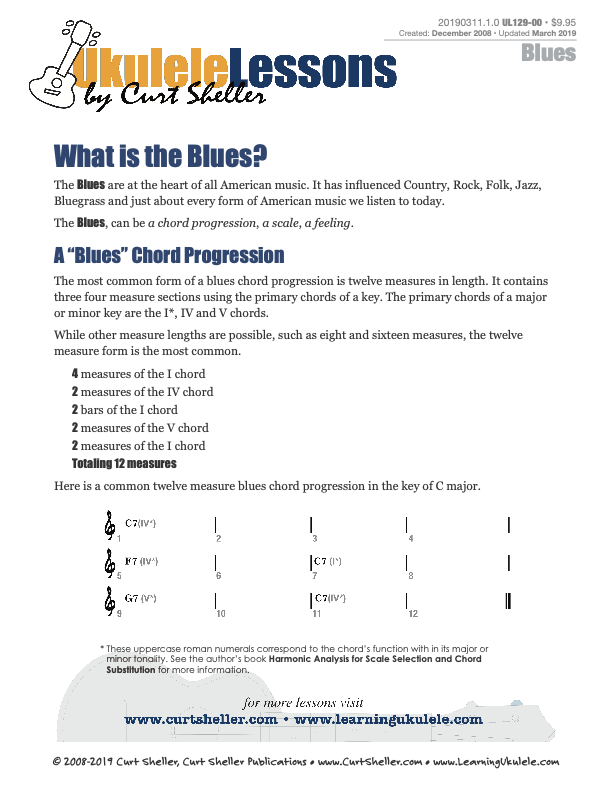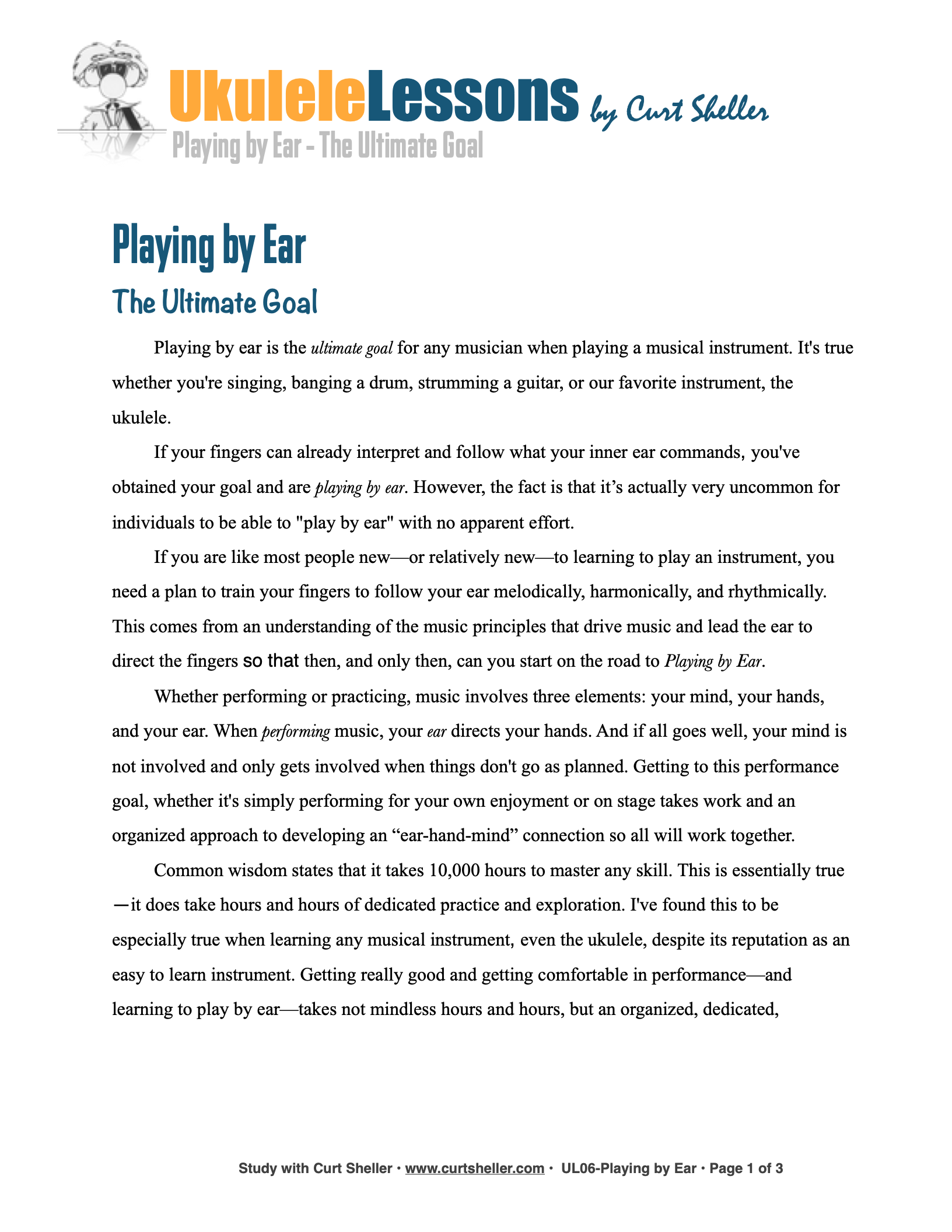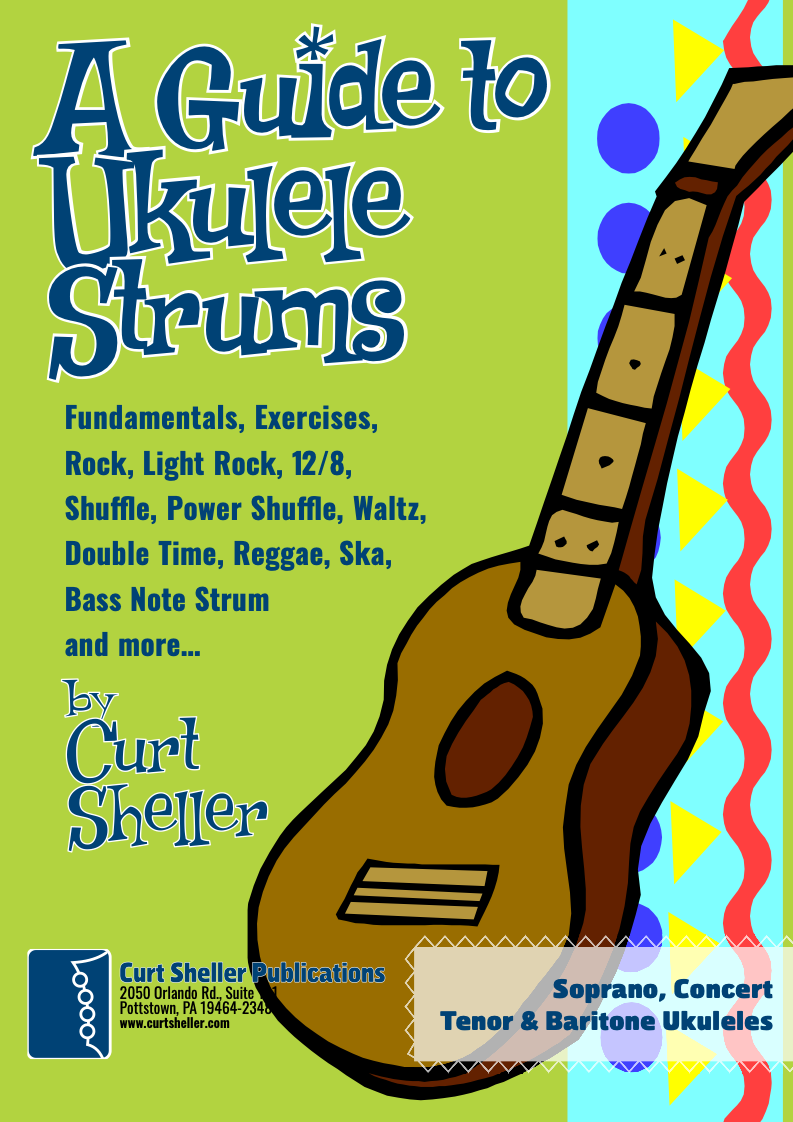"A strum is the execution of a specific rhythmic pattern, at tempo, in a particular style." A strum can be broken down into its rhythmic syllables. These rhythmic syllables are defined by what particular style is being performed. Basic ukulele strums and variations to get you started.
A strum is the execution of a specific rhythmic pattern, at tempo, in a particular style.
A strum can be broken down into its rhythmic syllables. These rhythmic syllables are defined by what particular style is being performed.
The basic ukulele strums and variations are the place to start with if you are just getting started with ukulele. Or, want to know how to successfully teach the basic strums.
This is the place to start if you are just getting started with ukulele. Or, want to know how to teach basic strums and always have success.
One of the first skills a ukulele player learns is the art and craft of strumming and playing rhythm. This refers to an accompaniment technique suitable for the singer, singer - songwriter or someone who plays a support role for another instrument.
Strumming requires a specific set of skills. They are: 1) Memorization of chords 2) The ability to switch chords smoothly and 3) The ability to choose and execute a suitable rhythmic strum. It is this 3rd skill that is the focus of my book A Guide to Ukulele Strums and this online lesson.
Though strumming looks natural to the casual observer, it is anything but natural to the beginning ukulele player. Even experienced players have difficulty in identifying and executing certain strums. Though this is one of those topics that is typically taken for granted, there is much to learn about rhythmic feels, accents, dynamics, strum direction, feel, percussive accents, idiomatic styles and tempo variation.
Strumming is inseparably linked to rhythm. Though an ability to read rhythm is helpful, it's not necessary to profit from this material.
Each strum is identified with a term that differentiates it from every other strum. This term is typically called a "feel". Drummers learn these terms early in their studies so learning this language is not only helpful to learning the strums, it's also helpful with communications among musicians in general and drummers in particular.
Strumming can be executed with fingers or with a pick. Regardless of your own style of strumming, it ultimately involves combinations of down strokes and up strokes. In the finger style, down strokes can played with the thumb or the nail side of your fingers. Up strokes can be played with the thumb or fingers. Any technique is usable as long as you can differentiate between down and up strokes.
A metronome is helpful to these studies but not mandatory. The purpose of a metronome is to help develop a steady, internal sense of rhythm and to help increase your awareness of tempo in a beats per minute format. Terms like medium or fast tempo are approximate. An expression like "quarter note equals 120" is exact. We'll discuss strumming with and without the aid of a metronome.
All strums can be executed at any tempo.
One strum is different from another based on the stroke direction, the stroke density, the subdivision of the beat and the accent pattern.
####The Beat
The beat is the basic time unit of music. The term, "beat" often connotes the tempo of individual beats, the meter, rhythm or groove.
For strumming and rhythmic purposes the basic beat can be divided into two parts. The downbeat and an upbeat. The downbeat is what we typically tap our feet to. The upbeat is the part when our foot is off the floor, getting ready for the next down beat. Most music and strumming patterns have a steady pulse and even beat pattern.
This pulse is typically what listeners key into as they tap their foot or dance along with a piece of music. A tempo is the speed of this pulse.
Beats are grouped into a Time Signature with the most common being four beats per measure, 4/4 or common time.
If you have a heart beat and can count to four, YOU CAN learn to strum the ukulele.
While tapping you foot evenly, count 1, 2, 3, 4, 1, 2, 3, 4 … These are the down beats. Now add the word "and" when the foot is up, the upbeat. 1 and two and 3 and 4 and 1 and 2 and, etc… The numbers are the down beats with the “and” the up beat. For simplifying the counting notation we can use a + (plus sign) to indicate the "and".

For three beats per measure you would only count to three, for six beats per measure, count to six, etc…
Standard Music Notation indicating a basic rhythmic pattern.

####Strum Direction
Unlike most instruments the strum direction on a ukulele does matter as it pertains to the downbeat and the pulse of the music. You can can musically be strumming in time but not quite sound right.
Strum direction can only be down or up across the strings. If you ALWAYS strum down on the down beat or numbers and down or up on the "and". You are guaranteed a success and pleasent sound in executing varions strumming patterns.
Related Lessons, Videos, Lesson Series, Songs, Books & Reference Charts, Resources & Assets, Workshops are below.

The Blues are at the heart of all American music. It has influenced Country, Rock, Folk, Jazz, Bluegrass and just about every form of American music we listen to today. The Blues - a chord progression, a scale, a feeling. This lesson presents an introduction to the blues progression and a couple of scale position of the pentatonic scale to get you started improvising.

The ultimate goal for any musician when playing a musical instrument is to "Play by Ear". It’s true whether you’re singing, banging a drum, strumming a guitar, or our favorite instrument, the ukulele. If your fingers can already interpret and follow what your inner ear commands, you’ve obtained your goal and are "Playing by Ear."

Learn a variety of strums and rhythmic patterns in wide range of musical styles. One of the first skills a ukulele player learns is the art and craft of strumming, playing rhythm. This refers to an accompaniment technique suitable for the singer, singer - songwriter or someone who plays a support role for another instrument.

Finally, learn the names of the notes of the ukulele fingerboard in C tuning .

Learn the six fingering principles to navigating the ukulele fingerboard. Fingering is one of the most universal topics. Book: Six Secrets of the Ukulele Fingering

Harmonic Analysis is the understanding of the functional sequence of chords. It is the process used to analyze the harmonic structure of a progression, song or composition. Book: Harmonic Analysis for Scale Selection and Chord Substitution

Learn to read single note melodies in the first/open position is a lot easier than you might think. Book: Ukulele – Reading Music Series – Primer

An organized collection of daily practice and reference material for the contemporary ukulele player for developing the vocabulary and knowledge necessary for single note playing. Book: Daily Practice Material for the Contemporary Ukulele
Checkout the Books & Reference Charts for additional Handy, Dandy Reference Charts.

Ukulele Fingerboard Chart for C Tuning, Low or High G – G C E A

Ukulele Fingerboard Chart for G Tuning, Low or High A – D G B E

A handy reference chart of all 15 major and relative minor key signatures. US Letter 8.5 x 11 sized (ANSI-A), A4
Checkout the Books & Reference Charts for additional Handy, Dandy Reference Charts.



.jpg)